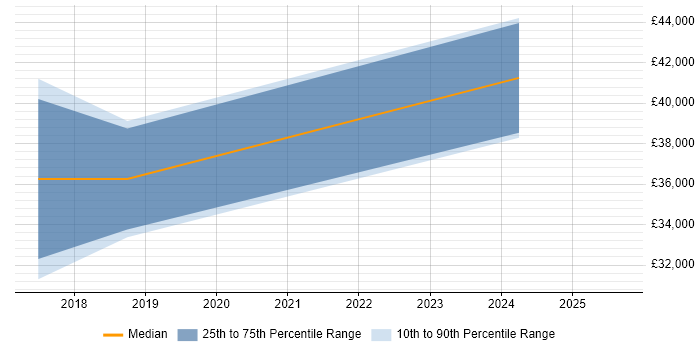User Acceptance Testing (UAT)
Northern Ireland > County Armagh
The table below provides summary statistics and salary benchmarking for jobs advertised in County Armagh requiring User Acceptance Testing skills. It covers vacancies from the 6 months leading up to 16 September 2025, with comparisons to the same periods in the previous two years.
| 6 months to 16 Sep 2025 |
Same period 2024 | Same period 2023 | |
|---|---|---|---|
| Rank | 3 | 8 | - |
| Rank change year-on-year | +5 | - | - |
| Permanent jobs citing User Acceptance Testing | 1 | 1 | 0 |
| As % of all permanent jobs advertised in County Armagh | 12.50% | 4.76% | - |
| As % of the Processes & Methodologies category | 16.67% | 16.67% | - |
| Number of salaries quoted | 0 | 1 | 0 |
| Median annual salary (50th Percentile) | - | £45,000 | - |
| Northern Ireland median annual salary | - | £47,500 | - |
All Process and Methodology Skills
County Armagh
User Acceptance Testing falls under the Processes and Methodologies category. For comparison with the information above, the following table provides summary statistics for all permanent job vacancies requiring process or methodology skills in County Armagh.
| Permanent vacancies with a requirement for process or methodology skills | 6 | 6 | 3 |
| As % of all permanent jobs advertised in County Armagh | 75.00% | 28.57% | 75.00% |
| Number of salaries quoted | 1 | 2 | 2 |
| 10th Percentile | - | £43,500 | £28,325 |
| 25th Percentile | - | £45,000 | £30,688 |
| Median annual salary (50th Percentile) | £80,000 | £50,000 | £36,750 |
| Median % change year-on-year | +60.00% | +36.05% | -2.00% |
| 75th Percentile | - | £55,000 | £43,188 |
| 90th Percentile | - | £56,500 | £45,775 |
| Northern Ireland median annual salary | £55,000 | £57,500 | £50,000 |
| % change year-on-year | -4.35% | +15.00% | +5.26% |
User Acceptance Testing
Salary Trend in County Armagh
Salary distribution trend for jobs in County Armagh citing User Acceptance Testing.

User Acceptance Testing
Co-occurring Skills and Capabilities in County Armagh by Category
The follow tables expand on the table above by listing co-occurrences grouped by category. The same employment type, locality and period is covered with up to 20 co-occurrences shown in each of the following categories:
|
|
|||||||||||||||||||||||||||
